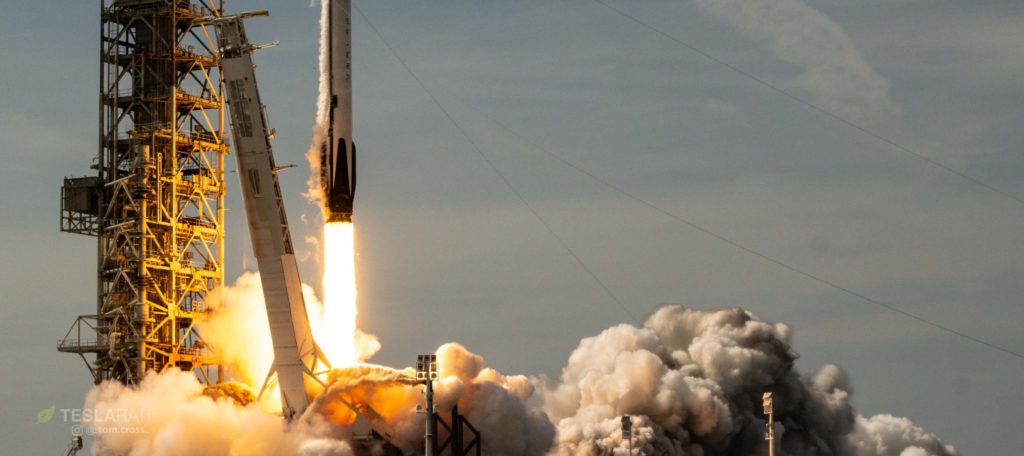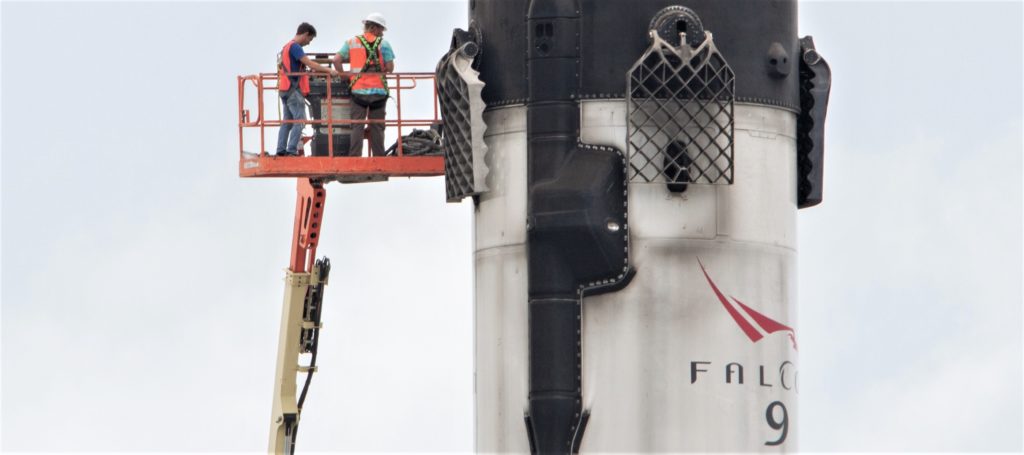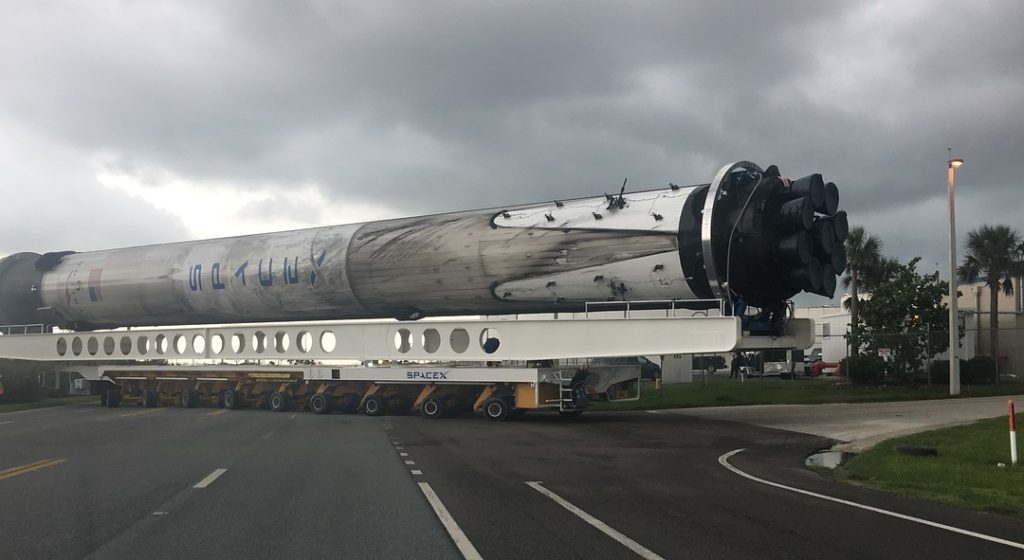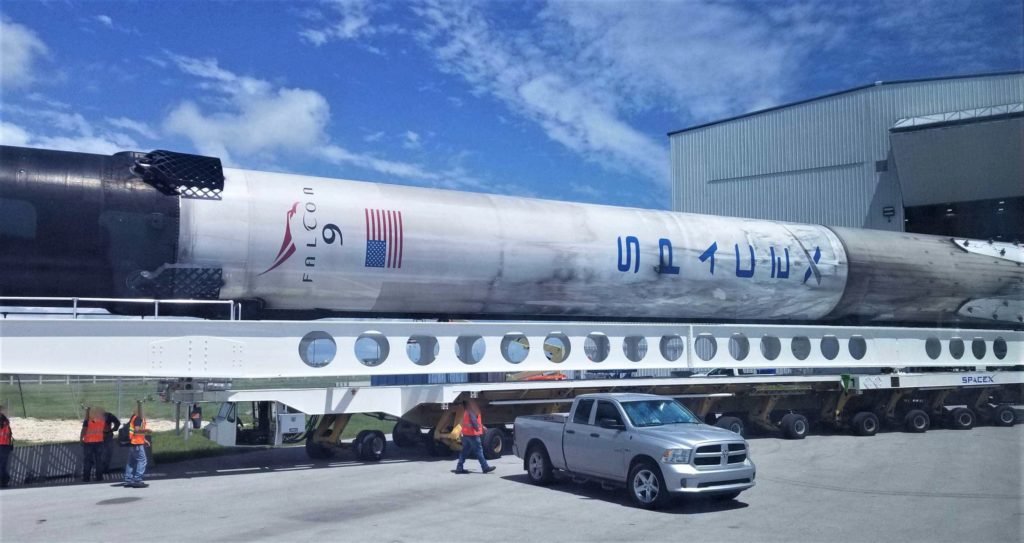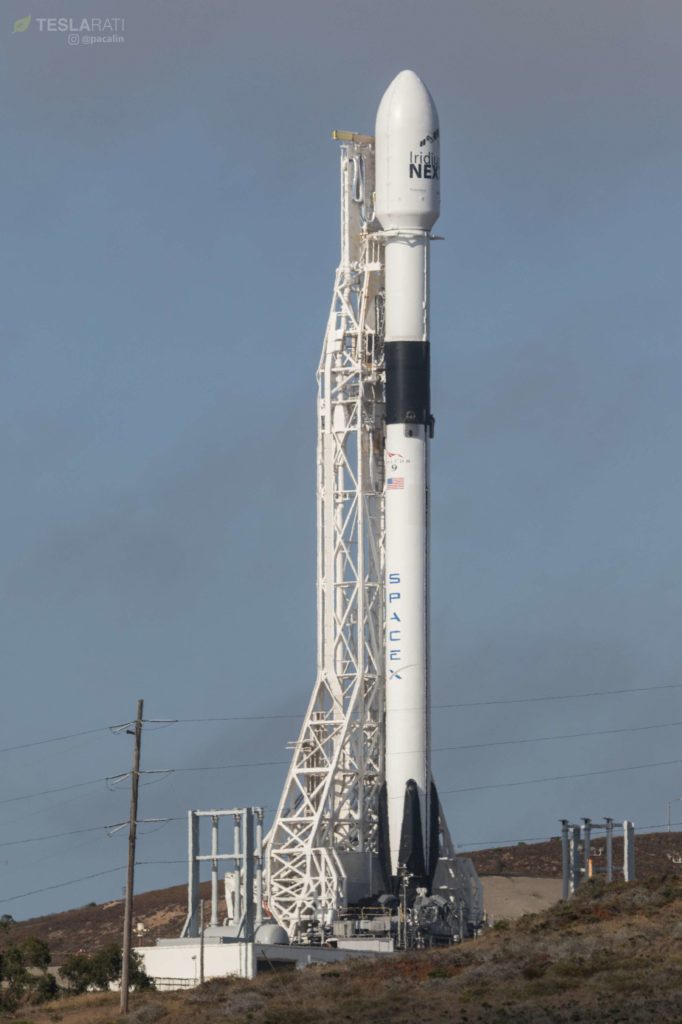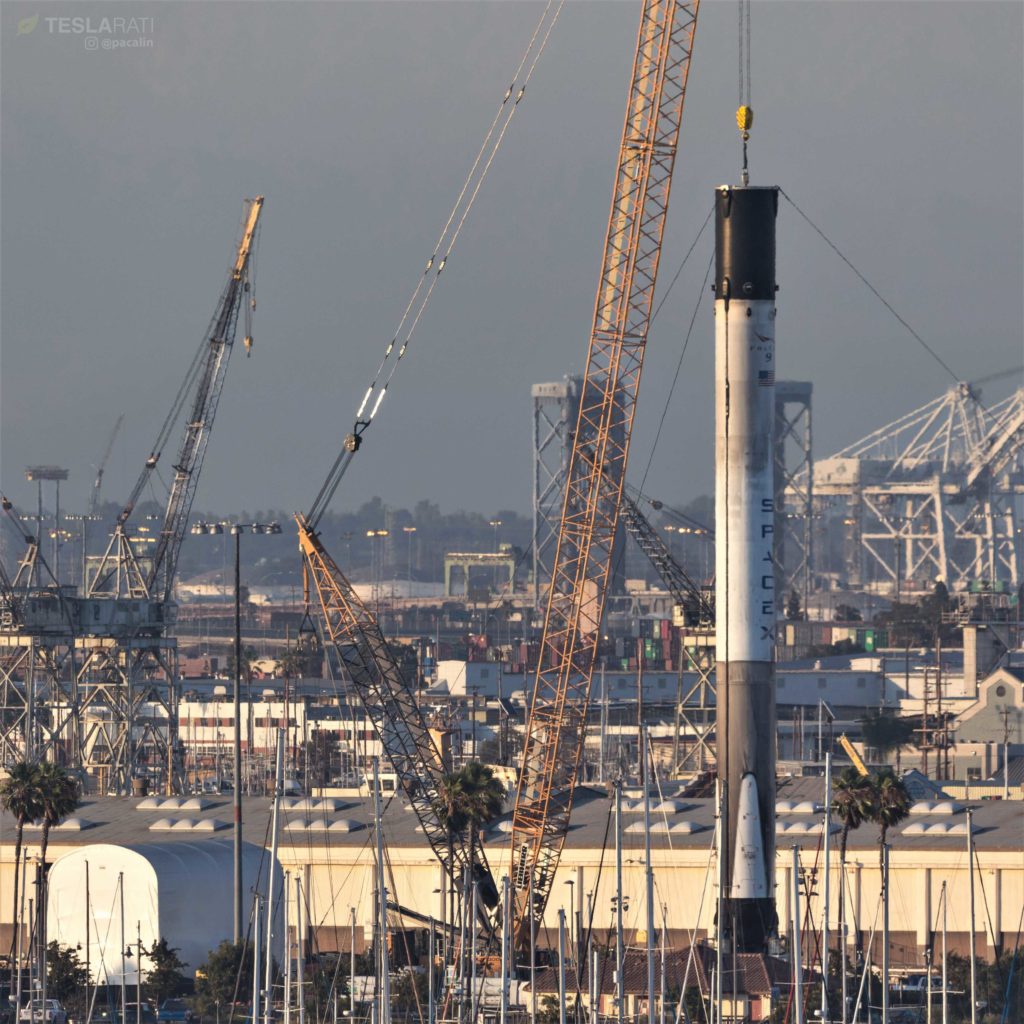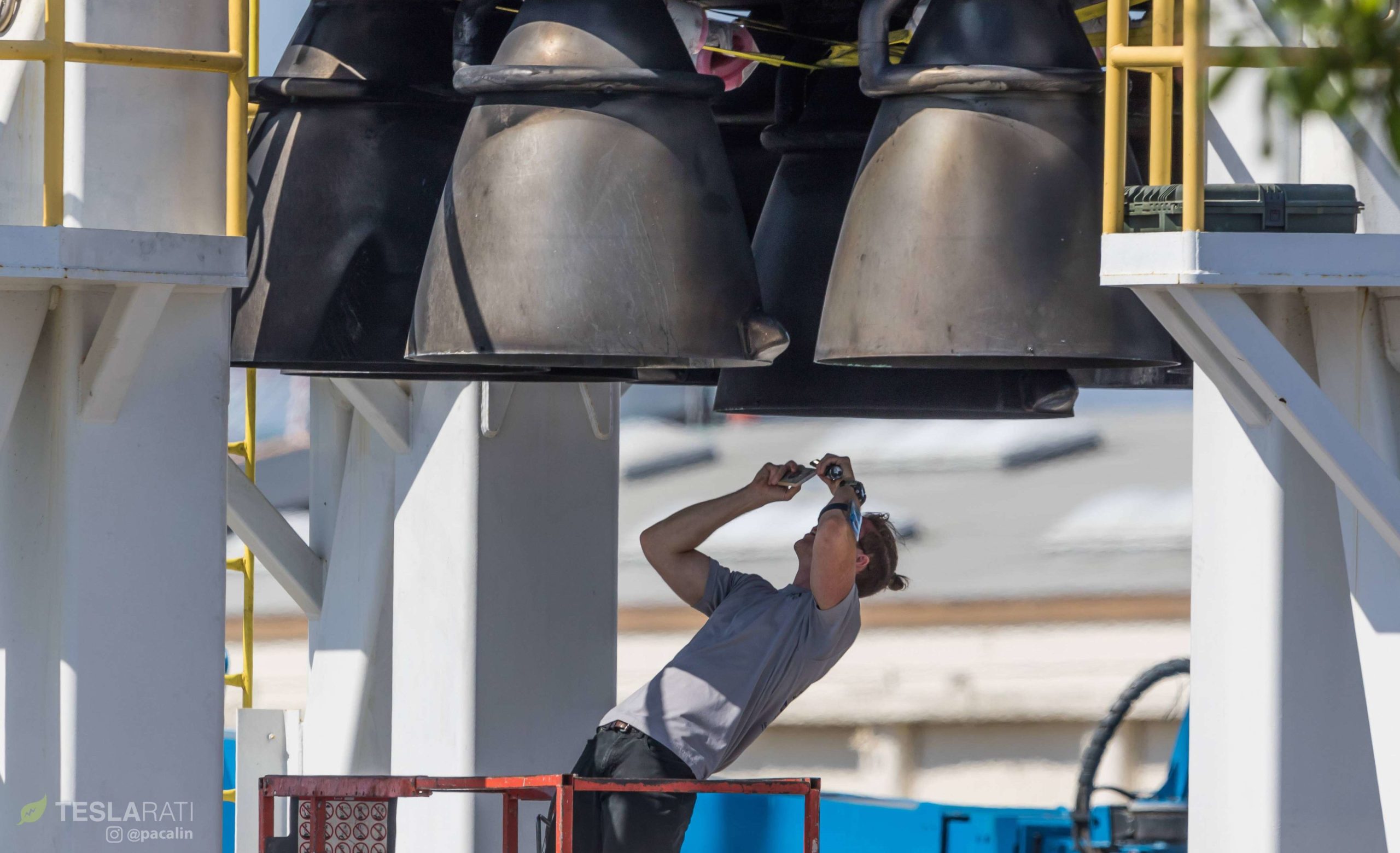
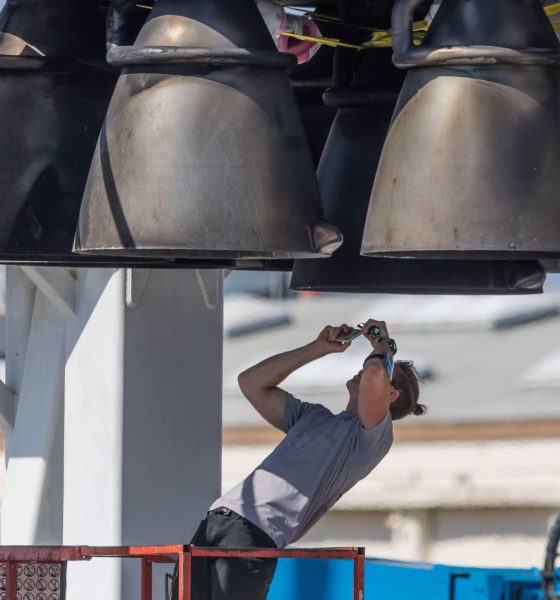
News
SpaceX set to launch its first previously-flown Block 5 rocket tonight
At the same time as SpaceX is readying its first Falcon 9 Block 5 booster reuse, the company’s second flight-proven Block 5 launch is already fast approaching and could be a strong contender to beat the company’s record of 72 days between launches of the same rocket.
A critical milestone for Falcon 9 Block 5
Formerly known as Telkom 4, SpaceX’s 1:18 AM EDT August 7th launch of the Merah Putih (Red and White in Indonesian) communications satellite will place the 5800 kg (12,800 lb) craft into a high-energy geostationary transfer orbit and will become the second heaviest GTO launch completed by SpaceX while still recovering the Falcon 9 booster. More importantly, however, Telkom 4 will also mark a critical milestone for Falcon 9 as the first reuse of a Block 5 booster.
https://twitter.com/_TomCross_/status/1025074341040533504
Designed to be many times more reusable and reliable than the already impressive Falcon 9 Full Thrust iterations preceding it, pathfinder booster B1046 could be capable of flying anywhere from 5, 10, or even 100 launches over the course of its flightworthy lifespan. It very well may require some considerable refinements to approach the true goal of orbital Falcon 9 launches with zero refurbishments between flights. CEO Elon Musk discussed those aspirations just before Block 5’s launch debut on May 11:
“We need to basically take the rocket from its landing pad, rotate it horizontal, stow the legs. Take it to the launch pad, attach an upper stage, attach a fairing with a payload. Then transport it out the launch pad, rotate it vertically, load propellant, and fly. And in principle, that is literally all that’s necessary.” – Elon Musk
This is understandably SpaceX’s goal, and it’s unlikely to happen just a few months after Block 5’s debut. Nevertheless, SpaceX appears to be already pushing the envelope of what they’ve previously accomplished with reusable Falcon 9s.
- B1046 lifts off for the first time on May 4th, 2018. (Teslarati)
- Falcon 9 B1046 returned to Port Canaveral aboard drone ship OCISLY on May 15. It will launch for the second time on August 4. (Tom Cross)
- Soon after, B1046 was spotted on its way to a refurbishment facility around a week after its May 11 launch debut. (Instagram /u/tersco)
Breaking records four months after launch debut
While B1046 is tracking towards a booster turnaround of roughly 92 days, compared with the current Block 4 booster record of 72 days, it’s worth noting that more than a majority of that time was likely spent in a state of unique analysis for the inaugural Block 5 rocket, involving extensive disassembly. As stated by Musk, “we need to take [B1046] apart to confirm that it does not need to be taken apart.” He also expected that teardown analysis to be “very rigorous”, indicating that B1046 probably deserves the crown for booster turnaround so long as one only accounts for time spent in transport and undergoing refurbishment.
Still, winning by a technicality is never any fun. On that note, SpaceX appears to be tracking towards a true record-breaking rocket reuse, potentially as few as 40 days between launches. Not one to let its other launch facilities be left out, this record-breaking turnaround attempt will occur on the West Coast with Falcon 9 B1048, the recovery of which has been extensively documented by Teslarati photographer Pauline Acalin over the last two weeks. NASASpaceflight.com confirmed that SpaceX intends to reuse B1048 for this mission for the NET mid-September launch and the record ~50 days between flights could help explain an unusually extensive and lengthy analysis of the rocket after it was lifted off drone ship Just Read The Instructions and placed on its dockside recovery stand.
- B1047 before the launch of Telstar 19V. (Tom Cross)
- Sooty B1047 arrives at Pad 39A’s horizontal integration facility (HIF), July 31st. (Reddit – Kent767)
- Falcon 9 B1048 ahead of its launch debut, July 25th. (Pauline Acalin)
- After a successful launch and landing, B1048 stands tall in Port of San Pedro before being lowered and transported for its next launch. (Pauline Acalin)
After 10 days of recovery operations and analysis, B1048 was transported to SpaceX’s Hawthorne factory on August 6th, where it will presumably undergo refurbishment in preparation for its next launch. If B1046 and B1048 are representative samples of SpaceX’s growing rocket fleet, their stunningly quick turnarounds (especially for a largely new rocket that debuted less than 3-4 months prior) are likely a sign of things to come as SpaceX gets a handle on the real-world capabilities of its robust Block 5 upgrade.
It’s entirely possible that every Block 5 reuse to come can and will break the previous launch turnaround record, at least up to the point that SpaceX demonstrates a true 24-hour turnaround sometime next year. Stay tuned…
For prompt updates, on-the-ground perspectives, and unique glimpses of SpaceX’s rocket recovery fleet (including fairing catcher Mr Steven) check out our brand new LaunchPad and LandingZone newsletters!

News
Man credits Grok AI with saving his life after ER missed near-ruptured appendix
The AI flagged some of the man’s symptoms and urged him to return to the ER immediately and demand a CT scan.

A 49-year-old man has stated that xAI’s Grok ended up saving his life when the large language model identified a near-ruptured appendix that his first ER visit dismissed as acid reflux.
After being sent home from the ER, the man asked Grok to analyze his symptoms. The AI flagged some of the man’s symptoms and urged him to return immediately and demand a CT scan. The scan confirmed that something far worse than acid reflux was indeed going on.
Grok spotted what a doctor missed
In a post on Reddit, u/Tykjen noted that for 24 hours straight, he had a constant “razor-blade-level” abdominal pain that forced him into a fetal position. He had no fever or visible signs. He went to the ER, where a doctor pressed his soft belly, prescribed acid blockers, and sent him home.
The acid blockers didn’t work, and the man’s pain remained intense. He then decided to open a year-long chat he had with Grok and listed every detail that he was experiencing. The AI responded quickly. “Grok immediately flagged perforated ulcer or atypical appendicitis, told me the exact red-flag pattern I was describing, and basically said “go back right now and ask for a CT,” the man wrote in his post.
He copied Grok’s reasoning, returned to the ER, and insisted on the scan. The CT scan ultimately showed an inflamed appendix on the verge of rupture. Six hours later, the appendix was out. The man said the pain has completely vanished, and he woke up laughing under anesthesia. He was discharged the next day.
How a late-night conversation with Grok got me to demand the CT scan that saved my life from a ruptured appendix (December 2025)
byu/Tykjen ingrok
AI doctors could very well be welcomed
In the replies to his Reddit post, u/Tykjen further explained that he specifically avoided telling doctors that Grok, an AI, suggested he get a CT scan. “I did not tell them on the second visit that Grok recommended the CT scan. I had to lie. I told them my sister who’s a nurse told me to ask for the scan,” the man wrote.
One commenter noted that the use of AI in medicine will likely be welcomed, stating that “If AI could take doctors’ jobs one day, I will be happy. Doctors just don’t care anymore. It’s all a paycheck.” The Redditor replied with, “Sadly yes. That is what it felt like after the first visit. And the following night could have been my last.”
Elon Musk has been very optimistic about the potential of robots like Tesla Optimus in the medical field. Provided that they are able to achieve human-level articulation in their hands, and Tesla is able to bring down their cost through mass manufacturing, the era of AI-powered medical care could very well be closer than expected.
News
Tesla expands Model 3 lineup in Europe with most affordable variant yet
The Model 3 Standard still delivers more than 300 miles of range, potentially making it an attractive option for budget-conscious buyers.

Tesla has introduced a lower-priced Model 3 variant in Europe, expanding the lineup just two months after the vehicle’s U.S. debut. The Model 3 Standard still delivers more than 300 miles (480 km) of range, potentially making it an attractive option for budget-conscious buyers.
Tesla’s pricing strategy
The Model 3 Standard arrives as Tesla contends with declining registrations in several countries across Europe, where sales have not fully offset shifting consumer preferences. Many buyers have turned to options such as Volkswagen’s ID.3 and BYD’s Atto 3, both of which have benefited from aggressive pricing.
By removing select premium finishes and features, Tesla positioned the new Model 3 Standard as an “ultra-low cost of ownership” option of its all-electric sedan. Pricing comes in at €37,970 in Germany, NOK 330,056 in Norway, and SEK 449,990 in Sweden, depending on market. This places the Model 3 Standard well below the “premium” Model 3 trim, which starts at €45,970 in Germany.
Deliveries for the Standard model are expected to begin in the first quarter of 2026, giving Tesla an entry-level foothold in a segment that’s increasingly defined by sub-€40,000 offerings.
Tesla’s affordable vehicle push
The low-cost Model 3 follows October’s launch of a similarly positioned Model Y variant, signaling a broader shift in Tesla’s product strategy. While CEO Elon Musk has moved the company toward AI-driven initiatives such as robotaxis and humanoid robots, lower-priced vehicles remain necessary to support the company’s revenue in the near term.
Reports have indicated that Tesla previously abandoned plans for an all-new $25,000 EV, with the company opting to create cheaper versions of existing platforms instead. Analysts have flagged possible cannibalization of higher-margin models, but the move aims to counter an influx of aggressively priced entrants from China and Europe, many of which sell below $30,000. With the new Model 3 Standard, Tesla is reinforcing its volume strategy in Europe’s increasingly competitive EV landscape.
News
Tesla FSD (Supervised) stuns Germany’s biggest car magazine
FSD Supervised recognized construction zones, braked early for pedestrians, and yielded politely on narrow streets.

Tesla’s upcoming FSD Supervised system, set for a European debut pending regulatory approval, is showing notably refined behavior in real-world testing, including construction zones, pedestrian detection, and lane changes, as per a recent demonstration ride in Berlin.
While the system still required driver oversight, its smooth braking, steering, and decision-making illustrated how far Tesla’s driver-assistance technology has advanced ahead of a potential 2026 rollout.
FSD’s maturity in dense city driving
During the Berlin test ride with Auto Bild, Germany’s largest automotive publication, a Tesla Model 3 running FSD handled complex traffic with minimal intervention, autonomously managing braking, acceleration, steering, and overtaking up to 140 km/h. It recognized construction zones, braked early for pedestrians, and yielded politely on narrow streets.
Only one manual override was required when the system misread a converted one-way route, an example, Tesla stated, of the continuous learning baked into its vision-based architecture.
Robin Hornig of Auto Bild summed up his experience with FSD Supervised with a glowing review of the system. As per the reporter, FSD Supervised already exceeds humans with its all-around vision. “Tesla FSD Supervised sees more than I do. It doesn’t get distracted and never gets tired. I like to think I’m a good driver, but I can’t match this system’s all-around vision. It’s at its best when both work together: my experience and the Tesla’s constant attention,” the journalist wrote.
Tesla FSD in Europe
FSD Supervised is still a driver-assistance system rather than autonomous driving. Still, Auto Bild noted that Tesla’s 360-degree camera suite, constant monitoring, and high computing power mark a sizable leap from earlier iterations. Already active in the U.S., China, and several other regions, the system is currently navigating Europe’s approval pipeline. Tesla has applied for an exemption in the Netherlands, aiming to launch the feature through a free software update as early as February 2026.
What Tesla demonstrated in Berlin mirrors capabilities already common in China and the U.S., where rival automakers have rolled out hands-free or city-navigation systems. Europe, however, remains behind due to a stricter certification environment, though Tesla is currently hard at work pushing for FSD Supervised’s approval in several countries in the region.
